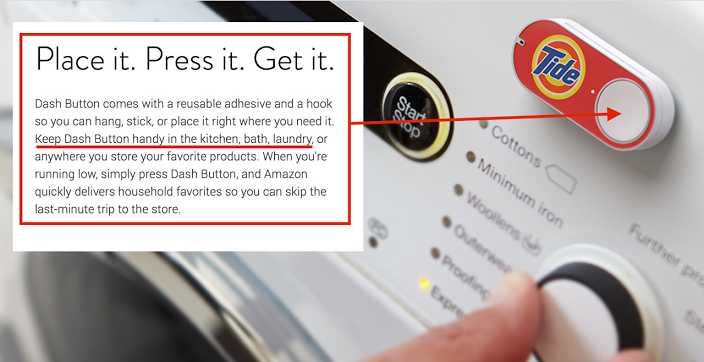
The arrival of the Internet began major disruption to decades old methods of consumer packaged goods (CPG) distribution. The tried and true method of manufactures selling to a collection of wholesalers, who then sold the product on a range of retailers began to be reexamined. We saw the arrival of online retailers like Amazon who sought to compete with brick and mortar retailers, trying to offer a wider selection while also offering potentially a more convenient (and possibly cheaper) shopping experience for a few (or possibly for many). We saw retailers experiment with selling on Amazon (adding an extra layer of intermediation) and grocery stores experiment with online ordering and local delivery.
But at the same, in 2010 we saw manufacturers like P&G start to experiment with selling direct to consumer over the Internet via sites like pgshop.com and then in 2013 P&G started selling their wares on Amazon. Below is a screenshot of a Pampers product listing on Amazon:

As you can imagine, when companies like P&G start selling direct to consumers and via Amazon, this makes traditional retailers nervous. And while maybe some day their nervousness will translate into major volume declines, we’re probably not quite there, yet. But for manufacturers, the possibility of selling direct to consumers or via Amazon changes everything. It changes everything because it requires companies selling consumer goods to build new marketing capabilities, and possibly even new manufacturing and distribution capabilities as well.

Here we have an example of a Sweet and Salty Box being sold to consumers via Amazon by Frito Lay. Compare this with a P&G Pampers page on Amazon and you’ll see that Frito Lay is still learning how to market via the Amazon channel and hasn’t completely figured out how to optimize the experience they create for consumers or likely how to maximize their conversion. But, you may also notice that the Amazon channel offers Frito Lay the opportunity to sell something they probably couldn’t sell in a Krogers, or Whole Foods, or Tesco, or 7-11.
In both of these examples, Amazon is taking and selling the inventory much as a grocery store would, but the customer wants, needs and expectations in the Amazon channel are different, and the skills to effectively market in this channel are different too. These are the reasons that Amazon changes everything for CPG companies. As Amazon continues to grow in importance as a channel for nearly everything, and as other sites like Facebook make a stronger push into eCommerce, and as consumer preferences for where and how they want to buy things changes, it presents a great opportunity for the forward thinking among us to take existing products and create new offerings that resonate with consumers showing a preference for existing and emerging digital channels and to create entirely new solutions that may involve a new product or possibly move beyond a product. Companies in CPG must continue to ask themselves:
- What is possible online that isn’t possible in-store?
- What do online shoppers want that is different than in-store shoppers?
- If we were to move beyond the confines of the product (and how it is packaged and presented), what would resonate with this type of consumer?
You can see on the Pampers page on Amazon above they’ve done a number of different things without changing the product:
- Offering a range of product quantities
- Coupons
- Amazon Dash buttons (push the button and it automatically orders for you)
- Etc.
And Frito Lay took their existing products and re-packaged them in a different way to suit the capabilities and needs of the channel because selling one individual bag of Doritos doesn’t make economic sense (and so Amazon won’t let you do it unless it is part of a larger Prime Pantry box).
If you were in charge, and had the product range that P&G or Frito Lay have, what would you do to optimize your results in the Amazon channel, or even more broadly in a direct to consumer context?
Please add your comments below.
![]() Sign up here to get Human-Centered Change & Innovation Weekly delivered to your inbox every week.
Sign up here to get Human-Centered Change & Innovation Weekly delivered to your inbox every week.

 If you missed How Leading Organizations Manage Their Open Innovation and Crowdsourcing Efforts – Part One, you can
If you missed How Leading Organizations Manage Their Open Innovation and Crowdsourcing Efforts – Part One, you can